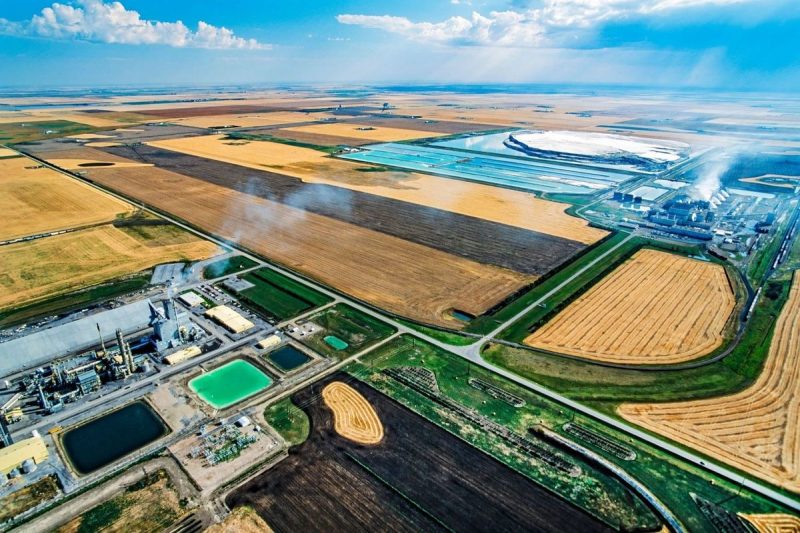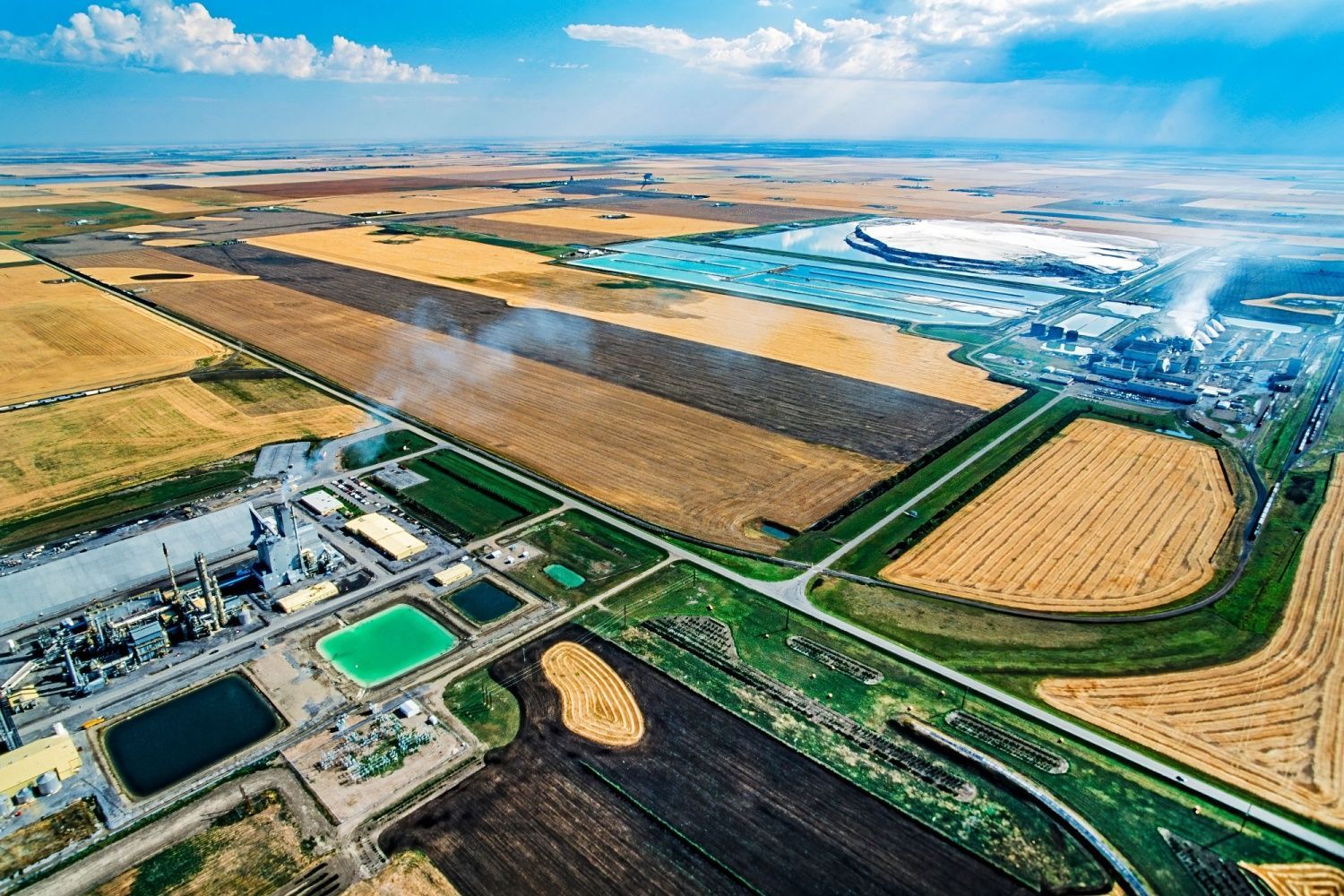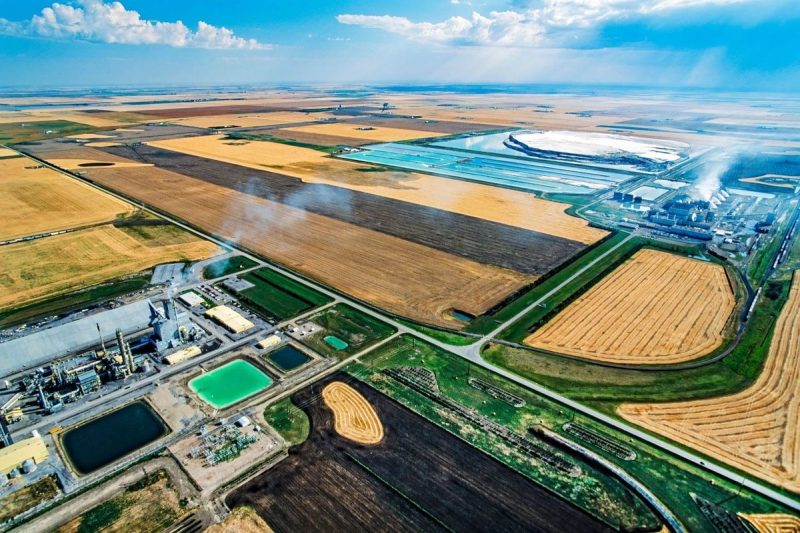

The potash sector faced a number of headwinds in 2024, leading to volatility in fertilizer prices for much of the year.
While the market stabilized in the first half of 2024, lower cost inputs for potash production and improved crop production placed downward pressure on potash prices in the second half of the year.
The World Bank expects fertilizer prices to average lower in 2025 before stabilizing in 2026, while remaining well above the lows of 2015 to 2019 due to strong demand and supply constraints such as export restrictions from China and sanctions on Belarus and Russia, three of the largest potash producing countries.
This is welcome news for potash investors — many potash-mining operations have closed in recent years, and some are waiting on the sidelines for better days and improvements in potash prices.
According to the 2025 Mineral Commodity Summary from the US Geological Survey, in 2024, global consumption of potash increased to 38.8 million metric tons (MT), with the top regions for potash consumption being Asia and South America. In 2025, potash consumption is projected to total 40.9 million MT.
The agency sees world potash production capacity rising to 76 million metric tons in 2028, up from 65.2 million MT in 2024. Most of the increase will come from new muriate of potash (MOP) mines and project expansions in Laos and Russia. Past 2028, new MOP mines are expected to come online in Belarus, Brazil, Canada, Ethiopia, Morocco and Spain.
1. Canada
Potash production: 15 million metric tonsPotash reserves: 1.1 billion metric tons
Leading the list of the top potash countries by production is Canada, which produced 15 million metric tons in 2024. The world’s biggest potash producer got even bigger in 2024 as it saw its potash production level climb by more than 11 percent compared to 2023. The prairie province of Saskatchewan is home to all of Canada’s potash production.
The US Geological Survey said Canada’s potash output growth was one of the largest, second only to Belarus, among nations producing the fertilizer mineral in 2024.
‘Canada was the leading exporter of potash in the world in 2024, as it increased sales to meet growth in world consumption,’ the USGS wrote. In fact, 79 percent of US potash imports for the year originated in Canada. This has created concern for the US food industry in 2025 as US President Donald Trump threatens to enact 25 percent tariffs on most Canadian imports, including potash.
There are several major players in Canada’s potash mining industry. Nutrien (TSX:NTR,NYSE:NTR), the world’s largest potash company. It was born from a 2018 merger between two major crop nutrient companies, Potash Corporation of Saskatchewan and Agrium. The deal created “a global agricultural giant” now valued at more than C$35 billion. Today, the company has six operating potash facilities in Saskatchewan.
The world’s largest potash mine, the Mosaic Company’s (NYSE:MOS) Esterhazy K3 operation, is capable of producing nearly 8 million MT of the fertilizer mineral each year. Esterhazy K3 has a mine life that extends out to 2054, according to Mining Data Online (MDO).
Additionally, BHP’s (NYSE:BHP,ASX:BHP,LSE:BHP) Jansen potash project is expected to begin production from Stage 1 in 2026, and Stage 2, which has also begun construction, is planned to double Jansen’s capacity by the end of the decade.
2. Russia
Potash production: 9 million metric tonsPotash reserves: 920 million metric tons
Russia is another of the world’s largest potash producers, and in 2024, the country posted 9 million metric tons in potash production, on par with the previous year.
Uralkali is Russia’s premier potash company and one of the world’s leading potash producers, accounting for roughly 20 percent of global supply pre-war. The company has five mines and seven ore treatment and processing mills.
In response to Russia beginning its invasion of Ukraine in February 2022, the EU placed import quotas on potash from Russia, and the US sanctioned specific companies, limiting potash imports. Both the EU and US had eased their restrictions on Russian fertilizer imports in late 2022 in reaction to growing concerns about global food insecurity.
However, Russia had set quotas on fertilizer exports until May 2023 in an effort to protect domestic supply levels, and in September that year introduced a 7 percent duty for fertilizer products, which expired at the end of 2024. EU countries are again weighing tariffs in 2025 as cheap Russian fertilizer is making it difficult for European fertilizer companies to compete.
3. Belarus
Potash production: 7 million metric tonsPotash reserves: 750 million metric tons
Potash production in Belarus totaled 7 million metric tons in 2024, up from an estimated 4.5 million MT in 2023. As mentioned above, the 56 percent jump in production was the largest increase in production among the world’s potash producing countries.
Prior to Russia’s invasion of Ukraine, output from the Eastern European country had been on an upward trajectory since 2016. Belaruskali is the country’s largest industry operator, with six mines and four processing factories.
Human rights concerns with the Belarusian government led the EU and US to place an array of sanctions on Belarus, including its potash companies, in 2021.
‘(In 2024) Belarus production almost returned to levels prior to 2022, when the European Union and the United States placed sanctions on the State-run Belarusian potash-exporting company,’ the US Geological Survey states.
The agency notes that Belarus potash exports remained well below its pre-2022 figures, due to Lithuania terminating the contract that let Belarus export potash from the port of Klaipeda. In 2024, Belarus instead exported its potash products through a number of Russian ports, and also sent shipments by rail to China.
4. China
Potash production: 6.3 million metric tonsPotash reserves: 180 million metric tons
China ranks fourth in global potash production, and its output climbed slightly in 2024 to 6.3 million metric tons from 6 million MT in the previous year.
Potash is extremely vital for China — the country is the largest consumer of the fertilizer, accounting for approximately 20 percent of world potash consumption. China’s domestic demand for the material is higher than its homegrown potash supply, making the country reliant on potash imports, especially when it comes to MOP.
The provinces of Xinjiang and Qinghai are home to China’s primary potash deposits, and the Qinghai Salt Lake Potash Company (SZSE:000792) is the country’s largest potash producer.
5. Germany
Potash production: 3 million metric tonsPotash reserves: 150 million metric tons
Germany’s potash production came in at 3 million metric tons in 2024, up from 2.7 million metric tons in 2023.
The world’s first potash deposits were discovered in Staßfurt in Saxony-Anhalt, now a German state, in 1856, and potash mining began at Staßfurt five years later. Germany was the world’s only potash producer until the beginning of the 20th century.
K+S (ETR:SDF) is one of Germany’s leading potash miners and has a number of projects, operating six mines in three districts in the country. The country is also home to DEUSA International, a private company that mines and markets salt-based products including potash fertilizers.
6. Israel
Potash production: 2.4 million metric tonsPotash reserves: large*
In 2024, Israel produced 2.4 million metric tons of potash. Annual potash production in Israel has remained in the 2 million to 2.5 million MT range since 2017. The country recovers potash from the Dead Sea.
Israel is sixth in terms of global potash output, and also hosts one of the world’s largest potash-producing companies, Israel Chemicals (NYSE:ICL,TLV:ICL). Aside from potash, the company produces roughly a third of the world’s bromine, which is often extracted from the same salt water and brine deposits that produce potash.
The outbreak of war between Israel and Hamas in October 2023 created some concerns over potash supply disruptions. However, because demand was lower than it was when the Russia-Ukraine war broke out, a similar price shock didn’t hit the potash market.
* As per the US Geological Survey, ‘Israel and Jordan recover potash from the Dead Sea, which contains nearly 2 billion tons of potassium chloride.’
7. Jordan
Potash production: 1.8 million metric tonsPotash reserves: large*
Potash production in Jordan increased marginally to 1.8 million metric tons in 2024 from 1.7 million MT the prior year. Jordan recovers potash from the Dead Sea.
Arab Potash Company, located in Jordan, is the seventh largest producer of potash by volume and the sole producer of potash in the Arab region. It has helped make Jordan a key potash supplier for India and Asia.
* As per the US Geological Survey, ‘Israel and Jordan recover potash from the Dead Sea, which contains nearly 2 billion tons of potassium chloride.’
8. Laos
Potash production: 1.5 million metric tonsPotash reserves: 1 billion metric tons
The Southeast Asian nation of Laos was the eighth largest potash-producing country last year, with an output of 1.5 million metric tons of potash in 2024. Its 2024 production was on par with last year and a massive leap from the 260,000 MT of potash produced in 2021. The country also hosts the world’s second largest potash reserves after Canada.
Asia-Potash International Investment (SZSE:000893), one of the largest potassium fertilizer producers in Asia, is at the helm of the country’s potash industry. It is one of the Belt and Road cooperation projects operated by Chinese companies.
Laos is in a great position to increase its potash production in the coming years. Argus reports that in March of 2024, Laos-based potash producer Lao Kaiyuan began construction on its third MOP unit. It is expected to be completed by the end of 2025, which will double the company’s current production capacity to 2 million MT per year.
9. Chile
Potash production: 750,000 metric tonsPotash reserves: 100 million metric tons
Chile recorded production of 750,000 metric tons in 2024. The South American country was previously a much larger producer, producing 1.2 million MT of potash in 2018, but its production dropped below 1 million MT in 2019 and has slipped further since then.
One of the largest producers of potash in the country is SQM (NYSE:SQM), which is also a leading producer of lithium in Chile. South America is one of the world’s largest potash consumers.
10. United States
Potash production: 420,000 metric tonsPotash reserves: 220 million metric tons
In 2024, US potash output totaled 420,000 metric tons, up 30,000 MT from its 2023 level. The US has potash reserves of 220 million metric tons.
New Mexico is the source for the majority of US potash production, according to the US Geological Survey. The state is home to two underground mines and one deep-well solution mine. Utah is also a sizeable contributor to the nation’s potash industry, with three operations.
Potassium sulfate or sulfate of potash (SOP) and potassium magnesium sulfate (SOPM) represent about 70 percent of the country’s total potash production, with MOP accounting for the remainder of production.
The US’s most prolific potash producers include Intrepid Potash (NYSE:IPI) and the Mosaic Company. Intrepid, which bills itself as the only producer of MOP in the country, operates an underground mine and a solar evaporation mine in Carlsbad, New Mexico, as well as solar evaporation mines in Wendover and Moab, Utah.
Mosaic has an operating potash mine in New Mexico, and the company’s output from that mine and its operations in Saskatchewan, Canada, account for 34 percent of potash production in North America.
Securities Disclosure: I, Melissa Pistilli, hold no direct investment interest in any company mentioned in this article.

